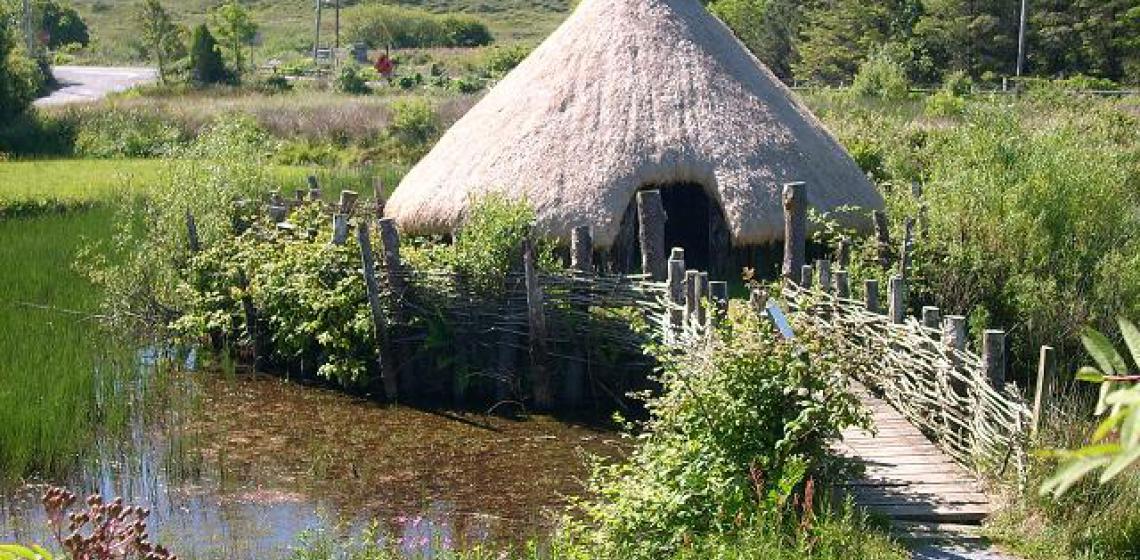Connemara Heritage and History Centre (IE)

The Connemara Heritage Centre is an open-air museum near Clifden, County Galway, in the Connemara region, Ireland. The Centre introduces the history of the area from prehistoric times to the foundation of the Irish Free State in 1922.
The centre's attractions include audiovisual and history presentations, as well as outdoor exhibits including reconstructions like the reconstructions of the crannóg, ring fort and a clochaun give an insight into life in ancient times.
The first settlers in Connemara settled mainly along the shoreline and rivers. They were hunter-gatherers and the main legacy they have left behind is 'middens' or ancient dumping sites which are found along the coast.
Farming began in Connemara approximately 6000 years ago. Evidence suggests that the settlers began to clear the woods in the valleys and that it was predominantly pastoral farming with some arable farming. They also continued to fish and hunt. The vast amount of megalithic tombs which dot the landscape in Connemara are reminders of these first farmers and their beliefs and rituals.
Many of the standing stones, stone alignments and burial monuments in Connemara date to the Bronze Age. The Celts emerged from Europe about 1000 B.C and brought with them new skills and traditions which have survived in Ireland to the present day. They were a warrior class and evidence of this shows in the remains of cliff top forts and crannogs which can be found in Connemara today. Reconstructions of a ring fort and a crannog are found on the grounds of the heritage centre.
Also on the grounds are the Dan O'Hara Homestead and pre-famine farm. Dan O'Hara's Homestead gives an insight into life in Connemara in the 19th century and the hardship endured by tenant farmers. Dan was forced to emigrate when he was evicted from his home for non-payment of rent. His story is immortalised in the ballad Dan O' Hara.
Text sources: Wikipedia & connemaraheritage.com
Image source: connemaraheritage.com
